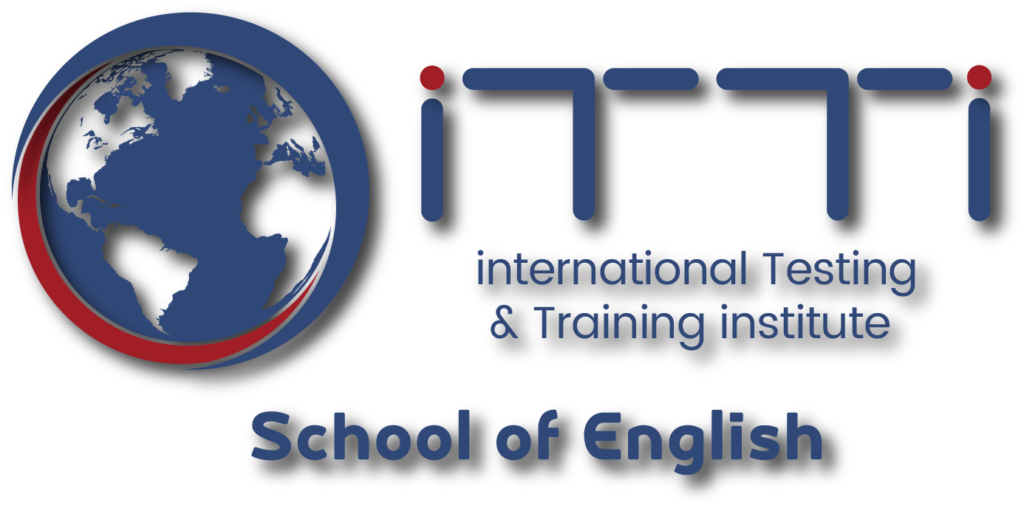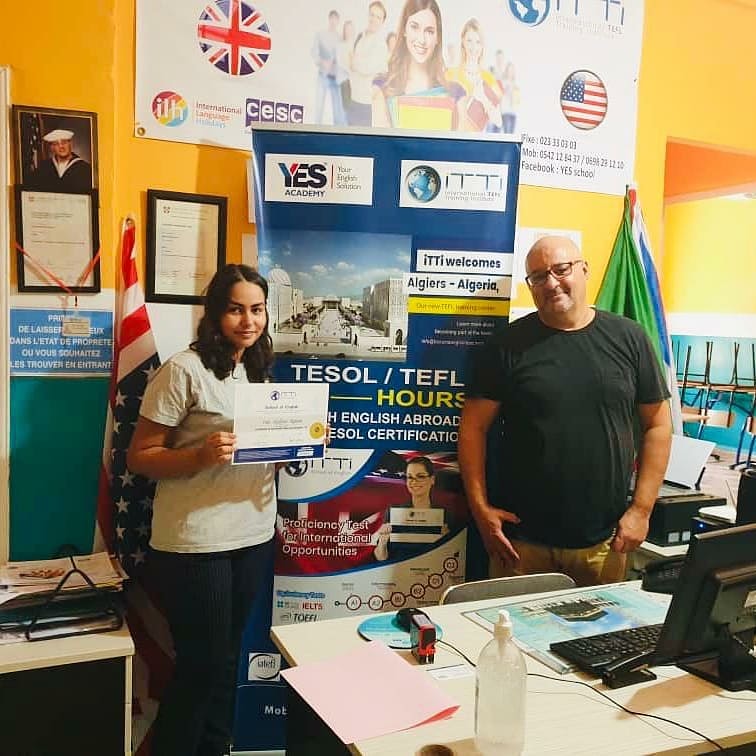Budget? Check.
Business plan? Check.
Curriculum? Check.
If you’ve completed these tasks, then you’re well on your way to launching a successful ESL school. However, a critical piece of the puzzle is still missing: Your prospective clients. Who are they? What do they need, educationally and otherwise? How do you attract them? Answering these questions can make the difference between running a lucrative business and merely breaking even.
Three types of ESL learners have the potential to make or break your school’s yearly earnings:
Business English learners
Online learners
Students studying for the TOEFL test
Each one has unique goals, expectations and pain points deserving special consideration.
Business English Learners
English is the lingua franca, or common language, for both international business and higher learning. For some people, the advantages of speaking English are starkly apparent. The British Council reports that men in India who speak fluent English earn 34 percent more on average than those who don’t speak English at all.
The economic impacts aren’t limited to personal earnings. According to a 2012 survey from the Economist Intelligence Unit, almost 70 percent of executives said their company’s expansion plans relied on having an English-speaking workforce
WHO THEY ARE
Business English students are usually working adults seeking to get ahead in their careers. They’re busier than most students, English teacher and trainer Gabrielle Jones explains. They have full-time jobs, and work comes first in their lives. They’re also incredibly goal-driven, and they’re accustomed to setting and achieving personal objectives.
WHAT THEY NEED
Authentic Learning Materials
Business English students are usually immersed in an environment where most of their colleagues speak English at varying degrees of proficiency. As a result, they already have access to a wealth of potential learning materials.
Instead of relying solely on a textbook, Jones advises, invite students to bring you emails, corporate newsletters and other workplace realia. Teachers can use the Your Agora platform to transform these materials into ESL lesson plans that are custom-tailored to students’ learning and professional needs. Don’t forget to include multimedia resources. TED Talks offer a robust library of videos on current and compelling business topics.
Flexible Scheduling
Business English learners often require classes outside regular working hours. Don’t be surprised if they expect to take courses in the early morning, during the lunch hour or in the evening, Jones says. Be prepared for last-minute cancellations when students have unexpected events in their professional or personal lives.
Staffing teachers at irregular hours can be both taxing and costly, particularly if you accidentally schedule too many or too few instructors at one time. Use employee scheduling software to ensure you have sufficient coverage. Create a cancellation policy that requires students to pay some or all of the costs of a class when they cancel on short notice. This policy helps you cover the staffing costs associated with unscheduled cancellations.
HOW TO ATTRACT AND KEEP THEM
Provide Structure
Even though they may be adults, business English students still crave structure. Minh Tran and Peter Burman, of EF Education First, insist that business English learners need firm deadlines, clear objectives and regular study times to be successful.
Create an Online Learning Community
Leverage the popularity of social media platforms like Facebook, Twitter and WhatsApp to your advantage. Tran and Burman found that students who participated in a social media group with their instructors and classmates study up to three times more than students who don’t.
Cultivate a Professional Atmosphere
Make sure your teachers are mindful of what they do, say and wear in the classroom. Business English learners put a high premium on professionalism, Jones says.
Online Learners
English is now a mandatory course in many primary schools around the globe, writes Christie Van Tol, former course coordinator for the University of Toronto TEFL Online program. Many parents and children are opting for a more convenient option: Learning English online. Internet-based ESL programs allow children to take English classes at home with teachers half a world away.
In China alone, the demand for online education is staggering. The market here could grow as much as 20 percent annually and is expected to reach $41 billion by next year, the South China Morning Post reported. 
WHO THEY ARE
Online learners can be of almost any age. In China, there’s a high demand for online ESL classes for students between the ages of 5 and 12, Forbes reports. However, some adult learners prefer to take online courses, too.
Children enrolled in online programs often take their courses at the end of the school day or on the weekend. Students’ parents often enroll them in courses because they want them to have more opportunities later in life. However, the students themselves may have little or no personal motivation for learning English. Extrinsic rewards can be helpful tools for keeping them engaged until they develop intrinsic motivations, like feeling a sense of accomplishment.
WHAT THEY NEED
Engagement
Looking at a teacher through a webcam isn’t nearly as engaging as being in their physical presence. Online ESL schools use a range of technologies and techniques to overcome this disadvantage.
Interactive classroom environments equipped with movable objects, built-in audio and other dynamic elements can easily capture students’ attention. When used thoughtfully, these elements can also improve the quality of the lesson itself.
A sophisticated learning management system (LMS) that allows teachers and students to hear, see and write to each other during class is an ideal tool for keeping students motivated, writes online English teacher Sylvia Guinan.
Expressive and high-energy teachers skillfully use online classroom tools. They use physical props to illustrate meaning. They move closer to the camera to create the sense of immediacy.
Community
A literature survey by Kebritchi, Lipschuetz and Santiague found that higher education students felt more isolated in online settings than they did in brick-and-mortar classrooms. The solution: Creating a “community of learning,” which both shapes students’ self-identity and positively impacts their learning.
HOW TO ATTRACT AND KEEP THEM
Thoughtful Use of Multimedia
Interactive games, videos, pre-recorded songs and other multimedia can keep students engaged and motivated. Just make sure they serve a clearly defined learning purpose. “Multimedia used in the wrong way can be a detriment to the learning process,” Kebritchi, Lipschuetz and Santiague warn.
Use technology to cultivate community. Use an LMS that allows you to put students in virtual groups where they can practice their English together. Guinan recommends creating a social media group when appropriate to let students congregate and share ideas. Always be sure to mediate the page and respond promptly to any signs of cyberbullying.
Investing in the Right Equipment
Schools need a range of high-tech tools — including computers, webcams, headsets and high-speed Internet connections — to host online classes. These tools are often quite expensive, but they’re worth the investment.
TOEFL Test-Takers
WHO THEY ARE
The Test of English as a Foreign Language, or TOEFL, is an assessment of a student’s ability to speak and comprehend English in academic settings. It’s often a college admissions prerequisite for international students who wish to attend universities in English-speaking countries. More than 10,000 universities and other agencies in more than 130 nations recognize TOEFL scores, according to the Educational Testing Service.
The TOEFL test is specifically for students 16 and older. However, other tests target younger learners. The TOEFL Junior is designed for students ages 11 and older, while the TOEFL Primary is tailored for students as young as 8 years old. Both assessments are intended to help parents and teachers monitor a student’s progress in mastering English.
For many parents, studying in an English-speaking college is the gold standard for their child’s education. In China, for instance, upwardly mobile families are keen to send their children to universities in the West because they believe their children will receive a higher quality education there. And since getting a good score is a strong predictor to gaining admittance into the student’s first- or second-choice school, preparation for the TOEFL test is a top priority for college-bound students and their parents.

WHAT THEY NEED
The TOEFL assesses students’ abilities in four key areas: Reading, listening, speaking and writing. To adequately meet test-takers needs, your school must provide specific strategies and study tips for each of these domains.
Reading
In the reading section of the test, students read three to four passages that can cover a broad range of academic disciplines, including the humanities and biology. A battery of multiple-choice questions tests their reading comprehension.
Students must have sufficient background knowledge to understand and respond to the reading passages. Research shows that prior knowledge is a critical prerequisite to reading comprehension. Learners should also be proficient in active reading strategies that can help them identify and assess a text as they read it. The McGraw Center for Teaching and Learning recommends students use these techniques:
Ask pre-reading questions to activate prior knowledge.
Identify the thesis of the text.
Sketch out visual aids, like mind maps or flowcharts, to help you organize the information.
Briefly summarize each paragraph in your own words, being careful to identify the main idea.
Listening
In this portion of the test, students listen to several recordings of dialog from a university context and answer multiple choice questions based on what they heard. The listening samples can include recordings of classroom lectures, classroom discussions, and conversations between students and instructors. Since each audio passage is played only once, strong note-taking skills are critical for success.
Speaking
This part of the test requires students to verbally answer questions using the information they gleaned from written and spoken passages.
Students should be well versed in proper English grammar, intonations and syntax. They should also have sufficient speaking confidence to readily and fluently answer questions. One of the best methods for achieving this, ESL entrepreneur Marc Anderson writes, is to give your students as many opportunities to speak as possible.
Writing
The final portion of the test requires students to write long-form responses based on information they read and hear. Test-takers also must write an essay that draws from their personal beliefs and experiences.
In addition to being proficient in spelling and punctuation, students must also be able to quickly organize their thoughts, so they can provide compelling and cohesive written answers in the 50 minutes allotted for the test. The Harvard College Writing Center recommends using this three-step process for writing an outline:
Step 1: Decide what you intend to say in your essay.
Step 2: Put the supporting details for each of your main points into general categories. Then, identify which categories can be combined or eliminated.
Step 3: Put the categories into the order that best supports your thesis.
Step 4: Organize relevant details within the categories, starting with the most general and progressing to the most specific.
HOW TO ATTRACT AND KEEP THEM
Offer Different Types of Preparatory Courses
Some students want to start studying for the TOEFL six months or more in advance. Others will prefer a shorter, more aggressive timelines. Offer courses designed to fit both long- and short-term deadlines to attract a broader range of students. Don’t forget to offer preparatory programs for the TOEFL Junior and the TOEFL Primary.
Tailor Instruction to First-Choice School
There are no predetermined passing or failing grades for the TOEFL. Instead, each university and college sets its own minimum score requirements. Before classes start, sit down with the student and identify the score they’ll need to get into their first- and second-choice schools.
Highlight Your Successes
As your program takes off, be sure to keep statistics of how many of your students have passed the TOEFL and gained admittance to their target university. This data helps prove value, and it will help you attract new clients.












 These objectives are the destinations on your student’s academic roadmap. Each target should have a clear list of goals the students must achieve before they complete the goals. These goals should align closely with the latest
These objectives are the destinations on your student’s academic roadmap. Each target should have a clear list of goals the students must achieve before they complete the goals. These goals should align closely with the latest